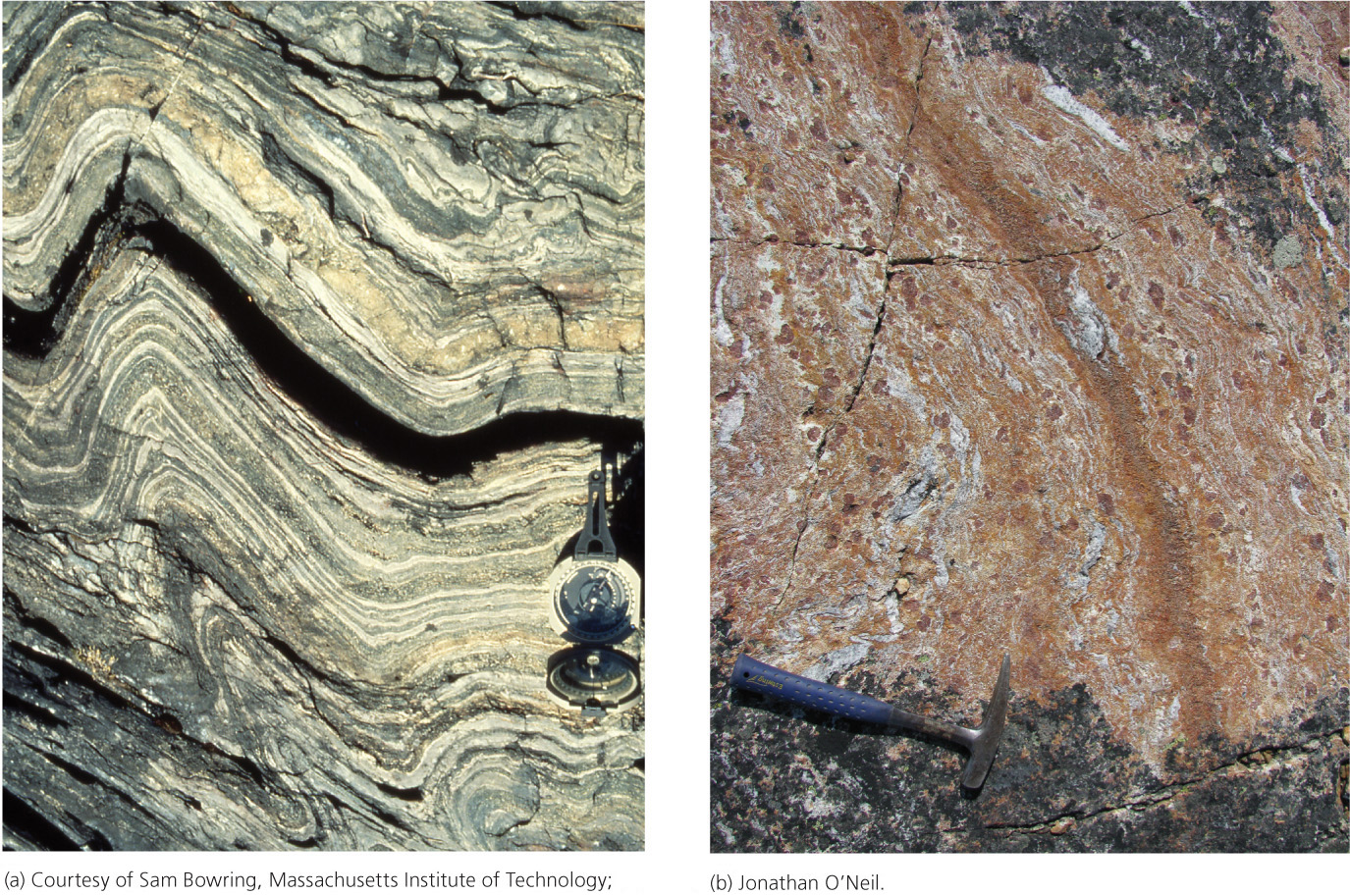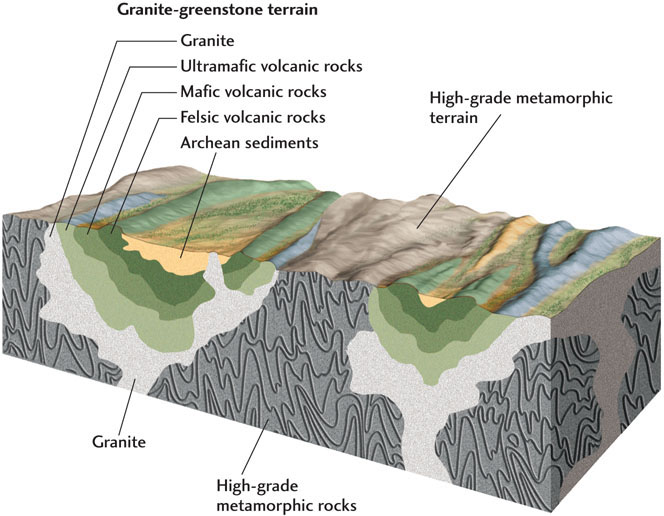The Origins of Cratons
Every continental craton contains regions of ancient lithosphere that have been stable (i.e., undeformed) since the Archean eon (3.9 to 2.5 billion years ago). As we have seen, deformation has occurred at the edges of these stable landmasses, and new crust has accreted around them, during subsequent Wilson cycles. But how were these central parts of the cratons created in the first place?
We know that Earth was a hotter planet 4 billion years ago due to the heat generated by the decay of radioactive elements, which were more abundant then, as well as the energy released by differentiation and by impacts during the Heavy Bombardment (see Chapter 9). Evidence for a hotter mantle comes from a peculiar type of ultramafic volcanic rock found only in Archean crust, called komatiite (named after the Komati River in southeastern Africa, where it was first discovered). Komatiites contain a very high percentage (up to 33 percent) of magnesium oxide, so their formation would have required a much higher melting temperature than is found anywhere in the mantle today.
If the mantle was hotter during the Archean, then mantle convection may have been more vigorous. The plates may have been smaller and might have moved more rapidly. Volcanism was widespread, and the crust formed at spreading centers was probably thicker. Although lithosphere must surely have been recycled into the mantle, some geologists believe that the plates formed at this time were too thin and light to be subducted in the same way that oceanic lithosphere is consumed in modern subduction zones.
We do know that a silica-rich continental crust existed at this early stage in Earth’s history. Formations as much as 3.8 billion years old have been found on many continents; most are metamorphic rocks evidently derived from even older continental crust. In a few places, small pieces of this early crust survive. The Acasta gneiss, in the northwestern part of the Canadian Shield, looks very similar to modern gneisses, although it has been dated at 4.0 billion years ago (Figure 10.22a). Geologists recently discovered an even older rock formation, nearly 4.3 billion years old, in northern Quebec (Figure 10.22b). In Australia, single grains of zircon (a very hard mineral that survives erosion) have been dated as old as 4.4 billion years (see Chapter 8).

274
In the early part of the Archean, the continental crust that had differentiated from the mantle was very mobile. It may have been organized in small rafts that were rapidly pushed together and torn apart by intense tectonic activity—a version of the flake tectonic process that appears to be happening on Venus today. The first continental crust with long-term stability began to form about 3.3 billion to 3.0 billion years ago. In North America, the oldest surviving example is the central Slave province in northwestern Canada (where the Acasta gneiss is found), which stabilized about 3 billion years ago. Geologists have been able to show that this stabilization process involved not only the continental crust, but also chemical changes in the mantle portion of the continental lithosphere, as we will see shortly.
The rock formations in this Archean crust fall into two major groups (Figure 10.23):

- 1. Granite-greenstone terrains are areas of massive granitic intrusions that surround smaller pockets of greenstones, which in turn are capped with sediments. Greenstones, as we saw in Chapter 6, are low-grade metamorphic rocks derived from volcanic rocks, primarily of mafic composition. The origin of these greenstones is controversial, but many geologists think they were once pieces of oceanic crust formed at small spreading centers landward of island arcs accreted to the continents and later engulfed by the granitic intrusions.
- 2. High-grade metamorphic terrains are areas of high-grade (granulite facies) metamorphic rocks derived primarily from the compression, burial, and subsequent erosion of granitic crust. These areas look similar to the deeply eroded parts of modern orogenic belts, but the geometry of the deformation is different. Modern orogenies typically produce linear mountain belts where the edges of large cratons converge. Areas deformed in the Archean are more circular or S-shaped, reflecting the fact that the cratons were much smaller, with boundaries that were more curved.
By the end of the Archean, 2.5 billion years ago, enough continental lithosphere had been stabilized in cratons to allow the formation of larger and larger continents by magmatic addition and accretion. The plate tectonic system was probably operating much as it does today. It is at about this time that we see the first evidence of major continent-continent collisions and the assembly of supercontinents. From this point onward in Earth’s history, the history of the continents was governed by the plate tectonic processes of the Wilson cycle.
275
276